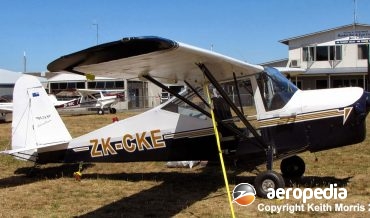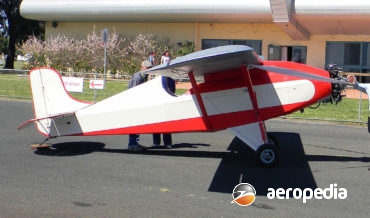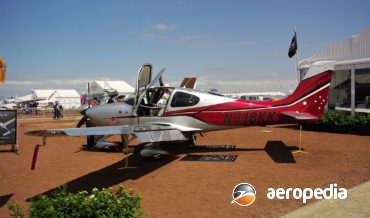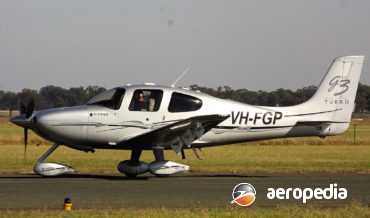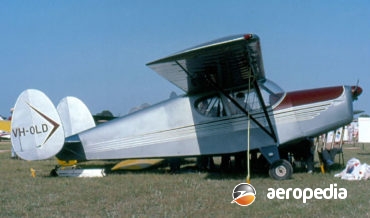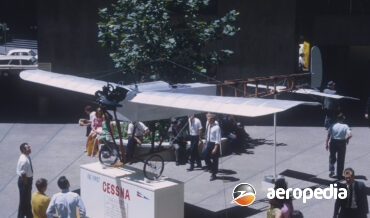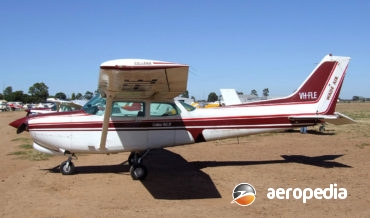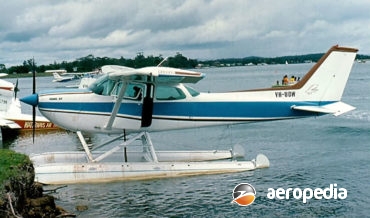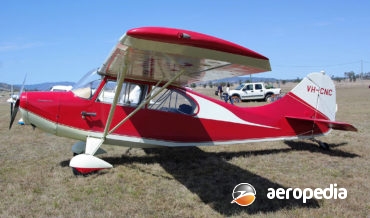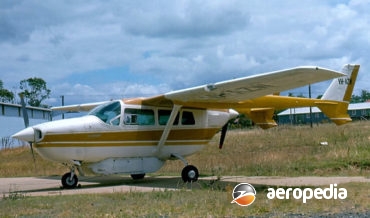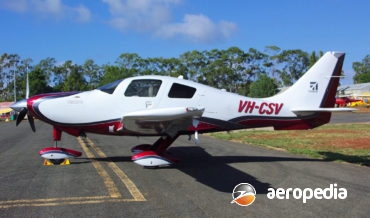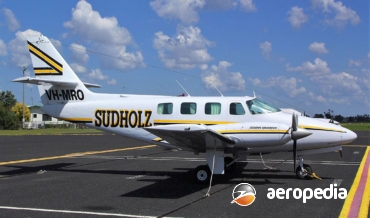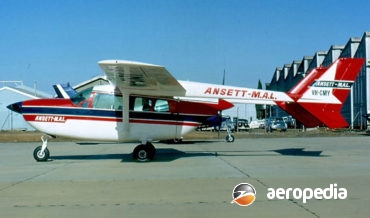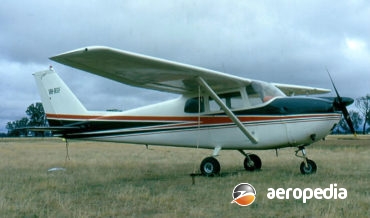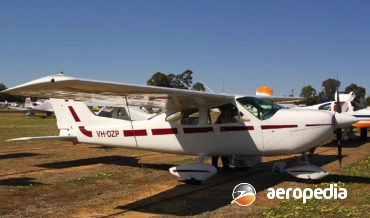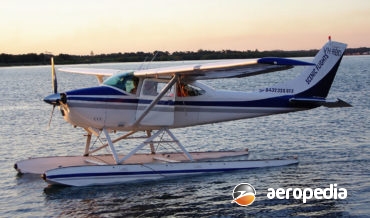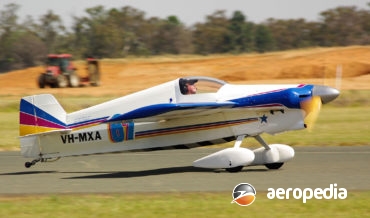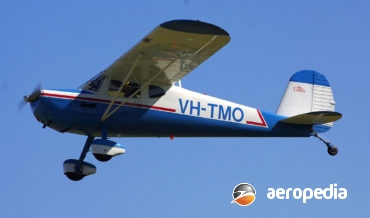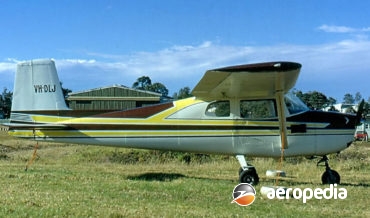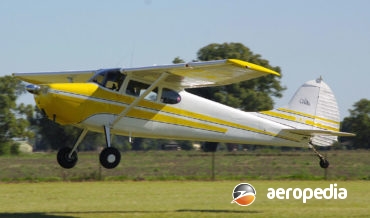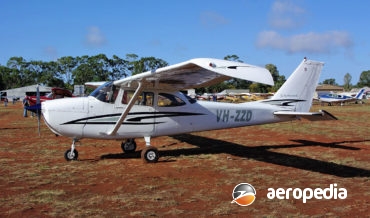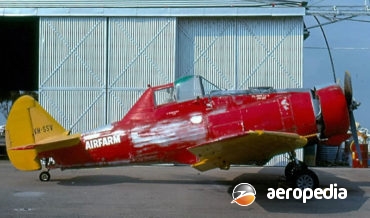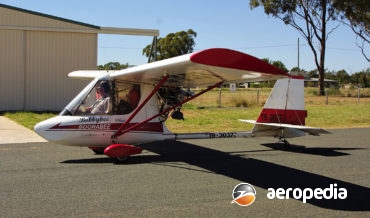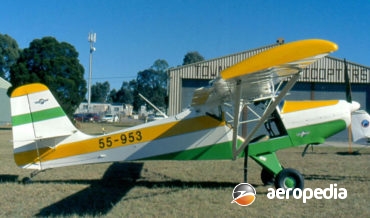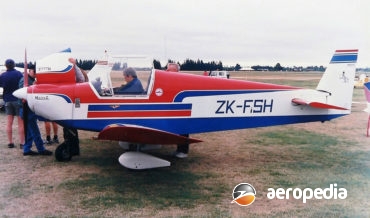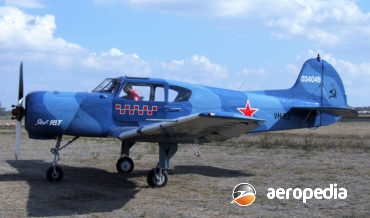All Contents
Contents
The Adventurer is a single-engine two-seat light sporting high-wing monoplane built in New Zealand by Mr Bruce Cooke.
David C. Eyre
- May 17, 2019
The Super Ace was one of a number of light aircraft designed for sporting pilots in the United States by Orland G Corben. His first design, the Ace, was first marketed in 1923 and this was followed in later years by the Junior Ace, the Cabin Ace and the Super
David C. Eyre
- May 17, 2019
Mr John Corby, a Sydney based consultant aero engineer, designed the Starlet for an English competition conducted by Rollason Aircraft Ltd in 1964.
David C. Eyre
- May 17, 2019
On 24 February 2015 Cirrus Aircraft launched a variant of the SR22 specifically tailored to Australian conditions. Called the Australis the first example of the aircraft (N318KK) flew into Australia in mid-February 2015 and was placed on display at the Australian International Airshow at Avalon.
David C. Eyre
- May 17, 2019
The Cirrus SR-20 was developed by the Cirrus Design Corporation in Minnesota and is a all-composite design with a fixed undercarriage seating four with a 149-kw (200-hp) Teledyne Continental IO-360 engine and is manufactured at the company’s facility at Grand forks, North Dakota.
David C. Eyre
- May 17, 2019
Following the success of the SR-20 series, Cirrus developed the larger and more powerful SR-22 series, the first of which was shown at the United States Aircraft Owners and Pilots Association meeting in Florida in 2000.
David C. Eyre
- May 17, 2019
Designed by R C Christophorides, the CH-3 and CH-4 series of light sporting aircraft was initially developed at Heston, UK, by the Chrislea Aircraft Co Ltd. The series was a development of the Chrislea LC-1 Airguard (G-AFIN) produced prior to World War II.
David C. Eyre
- May 17, 2019
Chrislea commenced construction of its CH-3 Ace (G-AKFD), designed by R C Christophorides, at Heston in 1946, this initially being a high-wing cabin monoplane with a single fin and rudder and a tricycle undercarriage, having an unusual control system with a single wheel on a universal joint replacing the conventional
David C. Eyre
- May 17, 2019
The first Cessna Model C-34 was completed in June 1935 at Cessna’s Wichita, Kansas, plant, and shortly thereafter it was entered in the All Kansas Tour (1,609 km -1,000mile) when it easily won a 40 km (25 miles) free-for-all race. Fitted with a Warner Super Scarab engine, the Model
David C. Eyre
- May 17, 2019
The Cessna C165 was a development of the earlier Models C-37 and C-38 produced by the Cessna Aircraft Co at its Wichita, Kansas facility shortly before the commencement of World War I. It was the culmination of the development of the Super Scarab powered series, and was a stylish, clean,
David C. Eyre
- May 17, 2019
In 1911 Clyde Cessna, a skilled automotive engineer, journeyed to New York where he bought an engineless Bleriot monoplane from the Queens Airplane Company (New York) licensee for the Bleriot company. Into this he installed a 45-kw (60-hp) four cylinder liquid-cooled Elbridge engine in his home state of Oklahoma, but
David C. Eyre
- May 17, 2019
The Cutlass RG was introduced to the Cessna range in late 1979 (although described as a new model for 1980) as a variant of the Model 172 Skyhawk with a retractable undercarriage, in order to compete with the very successful Piper Cherokee Arrow, a variant of the Cherokee with a
David C. Eyre
- May 17, 2019
The Hawk XP was designed and developed to meet customer demand for a more powerful version of the Model 172 Skyhawk. Introduced into the Cessna range during 1977, the Hawk XP offered a higher performance with considerably more power, but still remained moderately priced on the market.
David C. Eyre
- May 17, 2019
The Champion series of aircraft was introduced in 1946 by the Aeronca Manufacturing Corporation and subsequently it and a number of other manufacturers developed the design in various models, with various power plants.
David C. Eyre
- May 17, 2019
The Cessna Model 337 Super Skymaster series was introduced to the company’s range in February 1965 to replace the Model 336 on the production line. It continued the centre-line thrust concept of the previous model, and bore a close resemblance to that aircraft.
David C. Eyre
- May 17, 2019
Following the success of the Neico Lancair series of kitplanes, Lance Neibauer designed a production certificated aircraft based on the four-seat Lancair ES and set up a separate company to build and market the new type. First in the series became the Colombia 300.
David C. Eyre
- May 17, 2019
Design of the Cessna 188 series of agricultural aircraft began following a world market research and engineering survey of agricultural operators around the world by Cessna.
David C. Eyre
- May 17, 2019
The Cessna 190 and 195 series of aircraft was a large, very comfortable, five-seat cantilever, high-wing monoplane produced by the Cessna Aircraft Company in the USA between 1947
David C. Eyre
- May 17, 2019
The Model 210 was introduced to the Cessna range in 1959 as an intermediate model between the 182 and the twin-engine 310
David C. Eyre
- May 17, 2019
On 14 February 1978 Cessna flew a new light-weight twin-engined series of aircraft knownas the Model 303.
David C. Eyre
- May 17, 2019
Introduced into the Cessna range of aircraft in 1963, the Model 336 Skymaster was unique at that time amongst business light twin-engine aircraft as it had a tractor engine in the nose
David C. Eyre
- May 17, 2019
The Cessna 175 series was introduced to the Cessna range in 1958. The Skylark was a deluxe version of the basic 175, in a similar way to the Skyhawk being a deluxe development of the 172.
David C. Eyre
- May 17, 2019
The Cessna 177 Cardinal RG was introduced into the Cessna range in 1970 and is basically a variant of the 177 series with a hydraulically retractable tricycle undercarriage.
David C. Eyre
- May 17, 2019
The Cessna 177 series of aircraft, which was first placed in production in 1967, was originally released in two main models, the 177 and the Cardinal.
David C. Eyre
- May 17, 2019
The Cessna 182 Katmai Super STOL is a development of the Wren 460 (which see) which itself was developed in the 1960s and was a conversion of the basic Cessna 182 series to achieve outstanding short field performance.
David C. Eyre
- May 17, 2019
The Model 182, which was introduced into the Cessna range in 1956, initially used the same airframe and engine as the Model 180, but it had four seats for executive use rather than for the utility role, and was fitted with a tricycle undercarriage.
David C. Eyre
- May 17, 2019
In 1932 Mr Clifford Carpenter, a nephew of Sir Walter Carpenter, a member of the W R Carpenter & Co organisation, assisted by Messrs W Murrell, H Wyatt, C Scott and R A Grey, built a light aircraft over a period of two years in the garage of Borrows
David C. Eyre
- May 17, 2019
Intended to meet the requirements of ‘bush’ fliers around the world, the Cessna 185 was designed a s a rugged utility aircraft.
David C. Eyre
- May 17, 2019
In 1954 Tom Cassutt, an airline pilot in the United States, designed and built a small single-seat racing aircraft known as the Cassutt I for his own use, winning the 1958 National Air Racing Championships.
David C. Eyre
- May 17, 2019
During the years 1946 to 1949 Cessna produced two basically identical two-seat light cabin monoplanes known as the Models 120 and 140.
David C. Eyre
- May 17, 2019
Designed as a successor to the Cessna Models 120 and 140, production of which concluded in the mid 1950s, the 150 series proved to be one of the most popular civil training aircraft, with about 22,839 examples constructed and delivered between 1959 and 1977.
David C. Eyre
- May 17, 2019
The Model 170 was introduced into the Cessna range in 1948 as a development of the earlier two-seat light cabin monoplanes, the Models 120 and 140, and to meet a requirement among operators in the United States for four seats.
David C. Eyre
- May 17, 2019
Derived from the Model 170, the 172 differed initially mainly in that it had a tricycle undercarriage.
David C. Eyre
- May 17, 2019
The Ceres (the God of Fertility) was developed from the Wirraway trainer of World War II, which had been built at the Commonwealth Aircraft Corporation’s plant at Fishermens Bend, Vic, between 1939 and 1945.
David C. Eyre
- May 17, 2019
The Boorabee is an ultralight which could be built in either single-seat or two-seat forms.
David C. Eyre
- May 17, 2019
In the mid 1980s Mr Dan Denney formed Denney Aerocraft Co in Boise, Idaho to build a two-seat ultra-light aircraft known as the Kitfox, and in the first year 21 kits were delivered.
David C. Eyre
- May 17, 2019
The Call Air A9, which first appeared in Australia in the mid-1960’s, was developed from a line of agricultural aircraft originally built by Call Air Inc of Afton, Wyoming.
David C. Eyre
- May 17, 2019
The Call Air Model B-1 agricultural aircraft was a development of the smaller A-9 series and was of similar configuration, being designed and manufactured by the Inter Mountain Manufacturing Co of Wyoming, USA (IMCO).
David C. Eyre
- May 17, 2019
The CH-100 series of light single-engine aircraft was designed by German born, Canadian domiciled, designer Christopher Heintz and was designed for amateur construction, being basically a smaller variant of the CH-200 two-seater.
David C. Eyre
- May 8, 2019
The prototype of the Yak 18 series was flown for the first time in 1945 and, after entering production in 1947, saw extensive service with the Soviet Airforce, and the airforces of Austria, China, Czechoslovakia, North Korea, Poland, East Germany, Egypt and Hungary.
David C. Eyre
- May 8, 2019
Recent Comments
Archives
Categories
- No categories
Categories
- No categories
Latest Posts
Newsletter

